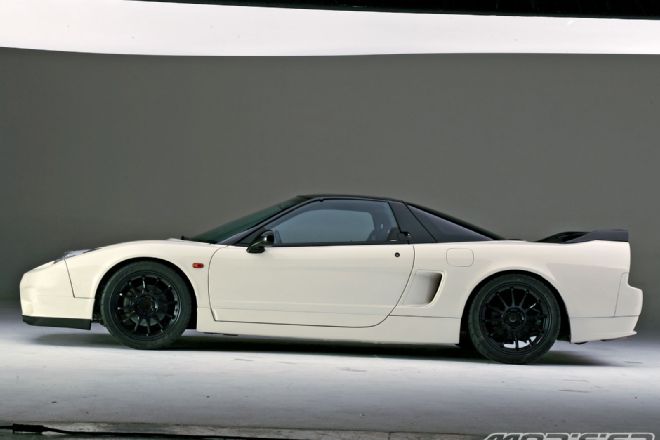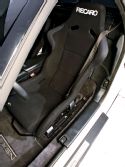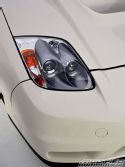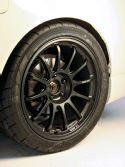Project NSX
With EVOs and STIs dominating the tuning world with amazing bang-for-the-buck performance, it's easy to forget these cars are ultimately still built from economy car platforms. A true sports car, on the other hand, has few of these compromises. And when it comes to uncompromising (and somewhat affordable) sports cars, Acura's NSX most definitely tops the list. That's why we've decided to adopt/cradle-rob this new project car from one of our sister publications.
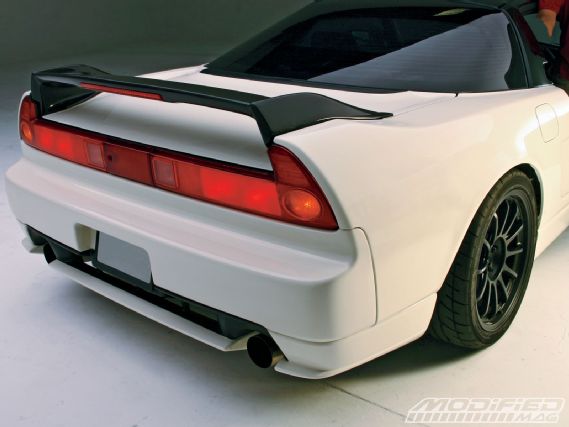 |
1991 Acura NSX - Project Car Adoption
|
1991 Acura NSX - Project Car Adoption
For nearly the same price as an early model EVO, you can now pick up these rare and near exotic NSXs and have the ultimate sports car of its age; the looks and prestige don't hurt, either. While these cars will cost more to tune, they are not hindered by constraints like four doors, cabin and trunk space, and all the ungainly weight distribution issues that come with that. The suspension geometry is also set up right from the start, so there's no need to throw a box load of parts at it just to make the car handle right when lowered. The best part is that these cars come with Honda reliability, which means it will take a track beating all day long and still drive home.
Tuning an NSX can be a tricky affair, though. Most get lost in the pursuit of widebodies, turbocharging or cosmetic trinkets. These things all fundamentally alter the already fine-tuned characteristics that Honda engineers already spent a great deal of time designing into the car. We want to keep the car as it was meant to be, a reliable street driver with phenomenal track characteristics. This also means that we'll be saving a lot of money by not blowing up transmissions and engines every couple months.
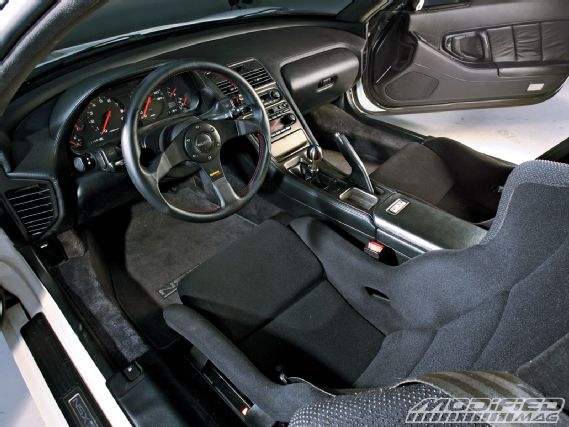 |
1991 Acura NSX - Project Car Adoption
|
1991 Acura NSX - Project Car Adoption
The project car started life as a beat-up, black, '91 model with the basic 5-speed transmission, 3-liter engine and none of the extra frills. We picked this early chassis for exactly these reasons because the 5-speed transmissions are stronger, the 3-liter engines have a shorter stroke and revs higher, there are no extra airbags, no OBDII diagnostics and early cars didn't have a heavy and flimsy T-top. It's also a lot cheaper than later-model cars.
Not having all the extra frills makes modifying the car a lot easier. In Type-R fashion, we'll be taking out much of the unnecessary weight while also optimizing engine performance with simple bolt ons. The main concentration will be on suspension work to make the car more predictable on track as well as transmission modifications that will make the car more responsive, while still comfortable as a daily street car.
Just prior to its adoption, the car was made over with an '02 NSX Type-R cosmetic makeover kit from Downforce. Even though this car looks fairly different from its original pop-up light form, underneath, all NSXs are essentially identical over its long 15-year production run. This makes the '02+ (NA2) makeover a simple matter of bolt ons.
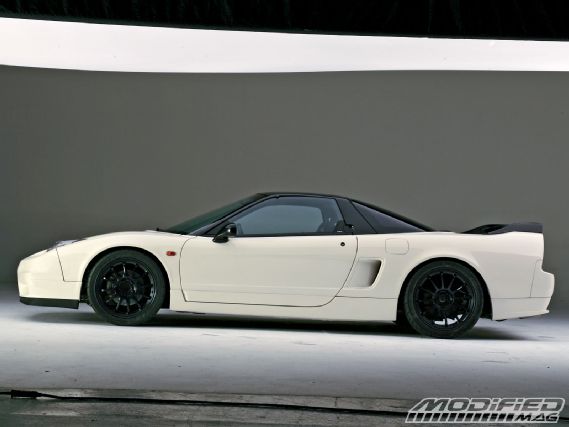 |
1991 Acura NSX - Project Car Adoption
|
1991 Acura NSX - Project Car Adoption
Downforce's kit comes with a new single-piece front bumper, side skirts, lower door trim and a new rear lower bumper all made from handmade weaved fiberglass. Weaved fiberglass cloth has to be laid into a mold by hand just like carbon-fiber mesh instead of being sprayed with a chopper gun. It's a time-consuming and tedious process, but makes for a much lighter, stronger, better fitting and more resilient parts since there is a lot less excess resin and warpage. We also added a replica Type-R vented hood and carbon-fiber finished rear deck wing for better aerodynamics on track. Every panel was then removed and the entire car was painted in Type-R Championship White.
No matter how good a car is mechanically, 18 years of use will inevitably show in places like the interior. So we freshened it up by taking out the original heavy, stock, torn-leather seats and airbag steering wheel and replaced them with Recaro SPG seats on Buddy Club Racing Spec seat rails and a Momo tuner steering wheel. NSX-Rs came with custom-made, carbon-Kevlar seats mounted on electric sliders. These seats are essentially Recaro Pole Position seats with different trim. We went with the higher SPG line since it shares similar dimensions to the Pole Positions (that we knew would fit) and offers more lateral support and a tighter fit. Even with the larger side supports, the SPG will fit snugly into the NSX interior. The Buddy Club seat rails save the trouble and time of going to a fabricator to build a custom seat bracket and rail low enough to give enough headroom to accommodate a helmeted melon.
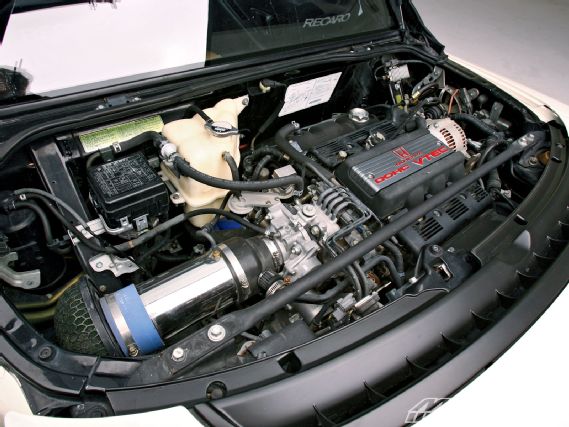 |
1991 Acura NSX - Project Car Adoption
|
1991 Acura NSX - Project Car Adoption
To complete the look, the stock 16-inch wheels from the NSX were torn off for staggered 17x8-inch (+44et) front and 18x9.5-inch (+35et) rear Type-F wheels from SSR. These two-piece, semi-solid forged wheels are the descendants of the venerable Type-C that have dominated grassroots racing for the past decade. The front and rear wheels weigh 16.1 and 18.7 lbs apiece, respectively. The two-piece wheel is constructed of a Semi-Solid Forged (SSF) face that's welded to a Heat-Treatment Manufacturing (HTM) hoop that, as SSR claims, creates the best combination of strength, resilience and light weight.
For tires we went with a set of 235/40R17 front and 265/35R18 Advan Neova tires from Yokohama. In terms of awesome street tires that offer huge grip in the dry, reasonable wear characteristics and acceptable wet performance, the Neova tops our list. We were careful to select these sizes and widths so as not to upset the oversteer/understeer balance of the car. Since the NSX is a mid-engine platform, it's possible to put too much tire or grip in the front and potentially cause the heavy rear to lose traction first in a turn. The same philosophy also applies to the rear. Too little rubber will cause oversteer while too much tire will make the car hard to balance and rotate in a corner. Since we don't plan to make more than 300 whp at the rear wheels, a 265-width tire offers the best balance between lateral grip and the power available to break rear traction and rotate the car. The Neova also has a great combination of street and track characteristics like a square shoulder profile, a consistent contact patch with limited camber, and limited pattern noise for such a sticky tire.
With all the cosmetics taken care of, we can get down to suspension and setup next time and finally get some performance numbers out of our NSX.

